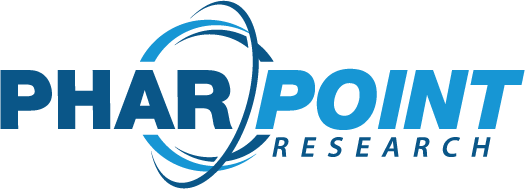Selecting a CRO as a Small or Emerging Sponsor
When it comes to clinical outsourcing, needs differ depending on several criteria – including sponsor size.
What makes a certain CRO the best choice for small and emerging pharmaceutical and biotechnology companies?
The Importance of Therapeutic Experience
According to a 2020 ISR report titled “CRO Quality Benchmarking Report – Phase II/III Service Providers: A Look at Small and Emerging Biopharma,” one of the most important criteria for selecting a service provider is therapeutic expertise.
In an interview with Ed Miseta, Chief Editor of Clinical Leader, ISR’s VP of market research Rebecca McAvoy explained: “While only 13 percent of respondents from larger sponsors chose Therapeutic expertise as the most important attribute, 24 percent of respondents (nearly double) from small and emerging companies selected this as their top attribute.”
Featured Resource: Learn more about PharPoint’s therapeutic experience
Outside of therapeutic expertise, what other areas may be more important to small or emerging sponsors?
Three Ways PharPoint Better Supports Small and Emerging Clients
At PharPoint, we’ve identified three points that our smaller clients value in a CRO – while there are certainly more, these areas are concerns commonly brought up with our teams.
As a client-focused CRO, they’re also areas we excel in.
1. You need faster results (without sacrificing data integrity or quality).
While faster timelines are important to ALL sponsors, their importance is often amplified for smaller and emerging clients who may be eager to present study findings to investors and other stakeholders.
To support these needs, all PharPoint clients (small or large) benefit from our industry-best biometric timelines.
When plotted against standard timelines from Tufts Center for the Study of Drug Development, PharPoint’s biometric timeline shows that we can lock a database an average of 31 days faster than competitors. Top line results are quick to follow – typically delivered only 2 days after database lock.
2. You have a tight budget (and need a partner who can work both efficiently and transparently).
When it comes to setting and sticking to a budget, communication is key. You need a CRO that can properly – and honestly – communicate costs and help you avoid unregulated scope creep.
PharPoint works closely with clients to keep costs within budget and is quick to communicate when unavoidable obstacles that may impact budget arise. And of course, since time is money, our standard timelines allow us to shorten the length of your trial, saving you money in the long run.
3. You want a consultative, experienced CRO with a track record of success.
Above all else, a team that’s capable and experienced is critical – and this should ring true whether it’s your in-house teammates or a service provider.
PharPoint leverages extensive industry expertise to make knowledgeable, long-term cost and time-saving recommendations for your program. We’ve participated in over 900 studies since 2007, and average two successful regulatory submissions each year. Our success is founded on sponsor satisfaction – and many of the innovative companies we work with are repeat clients.
Conclusion
Every sponsor is different, and finding a CRO that can fit your development program’s needs is critical.
As you search for a contract research organization to fit your needs as a small or emerging company, you can afford to be choosy. High quality, fast timelines, transparency, and therapeutic & operational expertise are all within reach.



